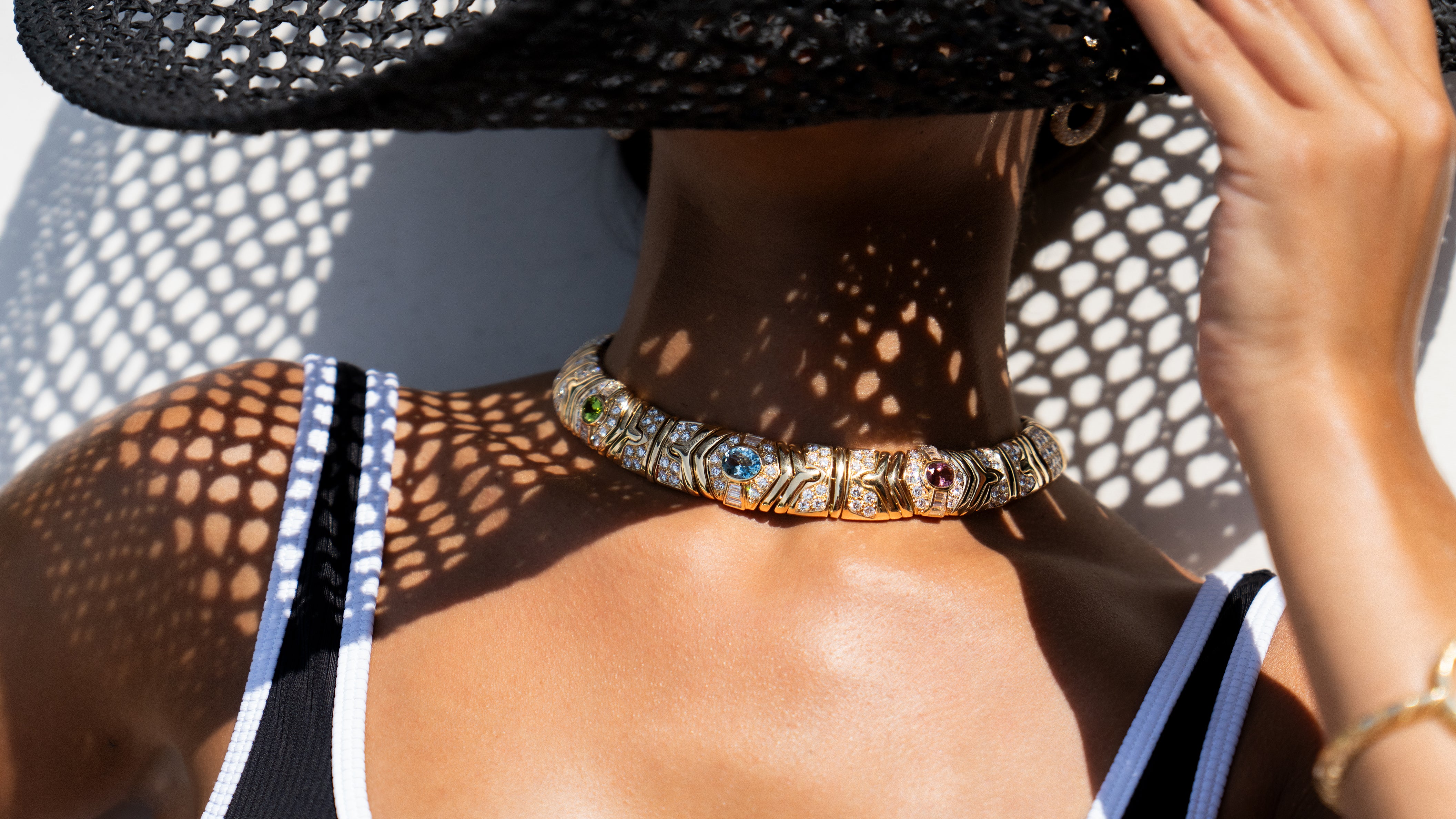Mid-Century Jewelry: 1950-1965
Europe was struggling to rebuild in the aftermath of World War II, while the United States was enjoying prosperous times on the domestic front. Everyone was trying to move forward, hopeful, and eager for a return to everyday pleasures.
A Little Background
The boys returned home and took up the jobs they’d left to serve their country. Women found themselves back in domestic roles. They settled down, married, and raised their children – lots of them. The “Baby Boom” era had begun and would continue through 1964.
While society’s finest still traveled to Paris for the latest styles, American designers were making headway in the luxury jewelry market. To help things along, some of the more prominent American jewelers created a presence in Paris, which allowed them to keep up with the latest trends and serve their wealthy clientele.
Of course, there were also Parisian jewelers who had their own boutiques in New York City, among them Cartier, Van Cleef & Arpels and Boucheron.

Mid-Century Style
As news of war receded and the world looked for better times ahead, leisurely pursuits came to the forefront. Fashions gave way to more feminine themes, in dress as well as in jewelry. Creative new forms began to emerge, thanks to the influence of such artists as Picasso and Braque. Dali even designed jewelry as an extension of art.
In the U.S., peacetime brought with it the end of rationing and wartime restrictions. Materials were available once more, and the nation’s prosperity created a new demand for innovations in fashion and jewelry. Abstract designs were all the rage. The new atomic age inspired starbursts and celestial themes. After the successful launch of the first artificial satellite by the Soviet Union, called “Sputnik,” Cartier launched its own collection of the same name, which featured spiky satellite-themed jewelry in brooches, necklaces, and earrings.

Mid-Century Materials
Textured gold was a mainstay. Florentine finishes, mesh, twisted rope, reeding, braided wire, fluting, and piercing were all used in gold jewelry design. If you were donning something in the daytime, it most likely was plain gold, sans gemstones. A night on the town, however, set the stage for diamond and colorful gemstone pieces. Popular gems of the day were amethyst, coral, turquoise, and cultured pearl.

Organic shapes were all the rage. The animal kingdom was well represented and featured intricate details: fish sported bejeweled scales; a bird’s feathers would feature colorful gemstones. Other creatures included panthers and serpents, sleekly designed with jeweled eyes to complete the realistic feel.
Color was an essential component of Mid-Century jewelry, with gems selected for their vibrant properties rather than their monetary value. Tiffany & Company’s Jean Schlumberger was renowned for juxtaposing precious stones with those of lesser value and using enamel to bring his visions to life.
Yellow gold, silver, and platinum came together with natural gemstones to create eye-catching looks. Cabochon gemstones in a variety of sizes were paired with diamonds in yellow gold.

Mid-Century Must-Haves
Chains had a place of honor in the jewelry fashion scene during this era. Foxtail, whether draped, betasseled, or themed with flowers and feathers, was a popular favorite. Large-beaded necklaces, imported from Germany and Japan, were layered to create a “wow” factor.
Costume jewelry came into its own. Embedded Lucite styles, as well as rhinestone jewelry, was widely accepted as an affordable option for those who weren’t able to acquire their precious counterparts. Everyday fashions included button earrings, available in an array of styles to match any outfit.

Hollywood Influence
In 1961, the iconic movie Breakfast at Tiffany’s premiered, giving Tiffany & Co. a whole new cachet. Audrey Hepburn was a knockout. She and other Hollywood actresses such as Grace Kelly, Marilyn Monroe, and, of course, Elizabeth Taylor were just a few of the glamorous figures whose jewelry played a part in their legendary presence.
Not an actress but certainly an influencer was Jacqueline Kennedy, whose unique style set trends and found a devoted following during the Mid-Century era and beyond.

The Slogan of the Century
“A Diamond is Forever” was penned in 1948 by Frances Gerety, a copywriter for NW Ayer, an advertising agency based in Philadelphia. The line has gone on to become one of the most recognized slogans in history and is credited with helping to revitalize sales of diamond products, particularly diamond engagement rings.
Browse our Collection of Mid-Century Jewelry

